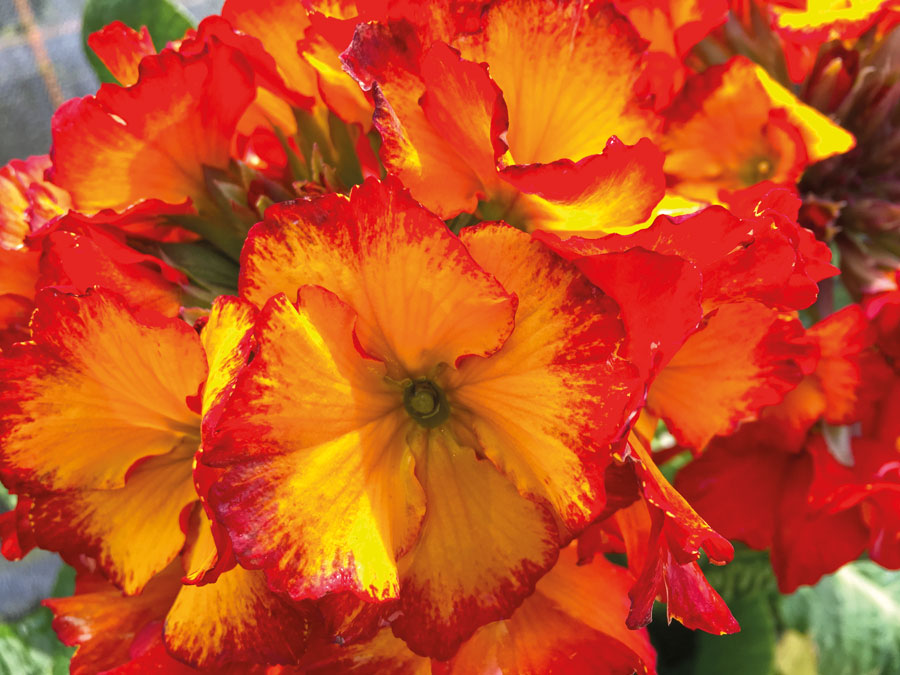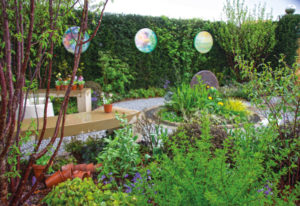I find it strange that during the early months of the year the garden seems to run at a steady pace but when May arrives then mayhem begins, every part of the garden demanding your attention, lawns, greenhouse, borders, containers and yes those pesky weeds. Try to make sure you have some time to enjoy the outdoors, by starting with a cup of tea and a leisurely stroll around the garden and ending the day sat on a bench with a brew, things seem to feel more worthwhile if you can relax a little and enjoy the fruits of your labours.

As you start to plant your summer bedding in the garden and containers, don’t forget to make the most of your old spring bedding plants especially primroses and polyanthus. These can be divided and planted in a corner of the vegetable garden to grow on for next year. When I was an apprentice we used to lift all the polyanthus, pull all the scruffy leaves off and pull the plant apart into three or four small crowns. Each one will produce a good strong plant by autumn and can be planted out in the garden or containers for a display next spring. A dressing of general fertiliser to the soil before planting will help them recover and make sure you water them in after planting.
Pansies and violas don’t split too easily but are fairly easy from cuttings. If you pot up lifted plants, cut off the straggly bits and place them in a sheltered part of the garden or a cold frame, apply a liquid feed every three weeks and by July you will have good strong growth that you can take cuttings from. This may seem a lot of work but if you have grown one that has a particularly good flower colour then taking cuttings will ensure that you have the same next year. Once the cuttings have rooted pot the plants on into a 10cm (4 inch) pot to grow on and plant out after you have removed summer bedding from borders and containers.
Perennials that were cut down either last autumn or in spring will now be putting on a spurt of growth. There is nothing worse than trying to tie up and stake a plant that is flopping about with all twisty stems, it is much better to provide support as they grow. First check how tall the plant grows and select a method of staking or support that will be about two thirds the height of the final plant. You don’t want bamboo canes or scruffy sticks spoiling the flower display. For short plants 30 – 45 cm ( 12 – 18 inches) that flop about I have used old wire hanging baskets turned upside down and placed over the crown of the plant. The shoots will grow through the mesh, providing it is not too small and will be invisible when the plant is in flower. I tend to use natural materials for staking in the borders, birch or hazel twigs are great but if you grow plants like delphiniums or dahlias you may need something more substantial. I have found that 2.5cm (1 inch) square stakes about 1.2m (4ft) long are ideal. Whilst at a local timber supplier I found the perfect solution in the scrap bin, they were treated timber offcuts from fence panel production. I used them in the cutting garden to stake the dahlias, but if using them in a display border its a good idea to paint them with blackboard paint or black fence paint. This has the effect of making the stakes almost disappear and doesn’t detract from the flower display. I also do the same with bamboo canes but it is essential that you give canes a rub over with sandpaper before painting. For tying material I use either plain jute string or black garden twine (available from your local nursery or garden centre).
As the temperatures climb through May so the pest populations increase, so take time to inspect your plants, especially those that produce a lot of fresh growth. Pests like greenfly seem to home in on the succulent fresh growth of plants like roses and border perennials. There are a number of ways in which you can reduce the population, I try not to use chemicals unless I am forced by an infestation of massive proportions. If I do then I use those derived from plants, loosely called pyrethroids, they are much safer and more environmentally friendly. I also use biological control which is becoming more readily available and for a wider range of pests. I also pick off pests like caterpillars and Lilly beetle. I crush the beetles but cut the caterpillars in half before putting them on the bird table, if left whole they are soon down the pole and on another plant. We also feed the birds but only in the morning, by mid afternoon the feed has been eaten but the birds still come to the garden and turn their attention to scavenging for pests, greenfly are a particular favourite of the blue tits.
Happy Gardening, Martin
( Next month, keeping on top of climbing and rambling roses, continue sowing salad crops and look after fruit).





